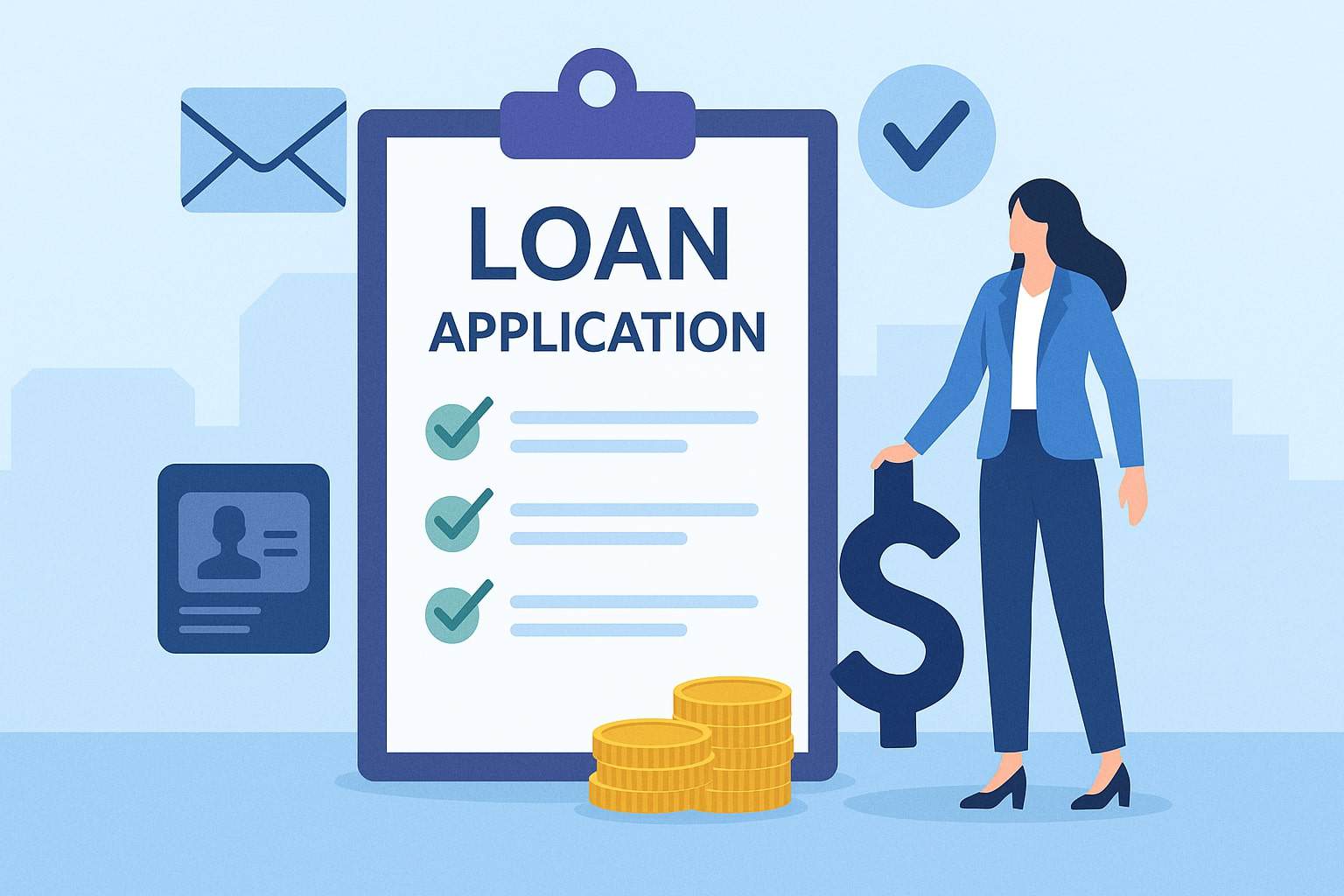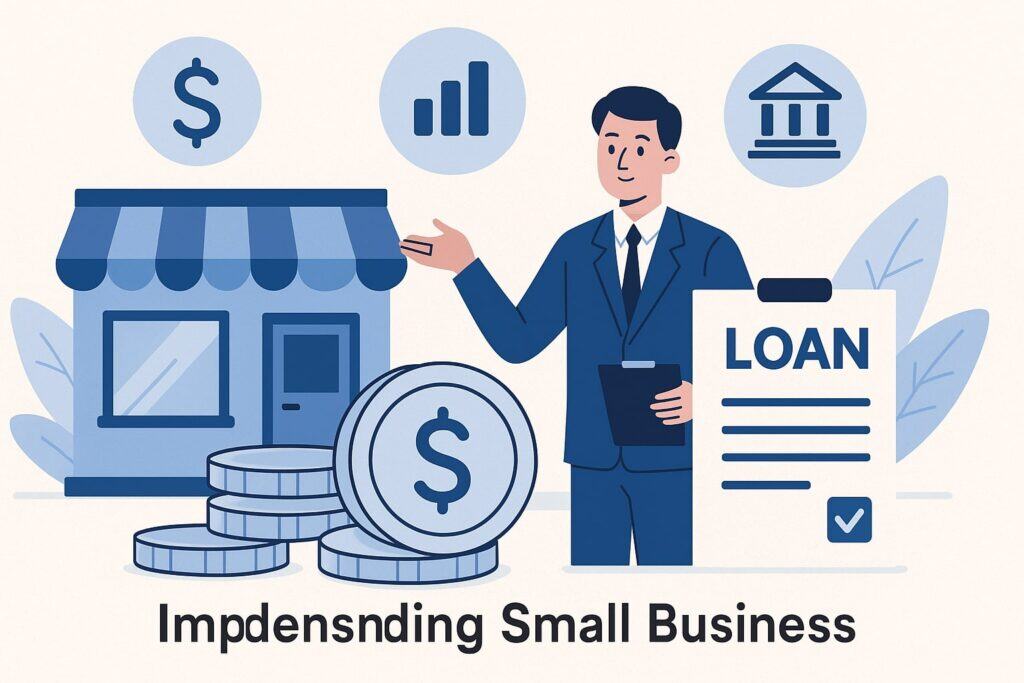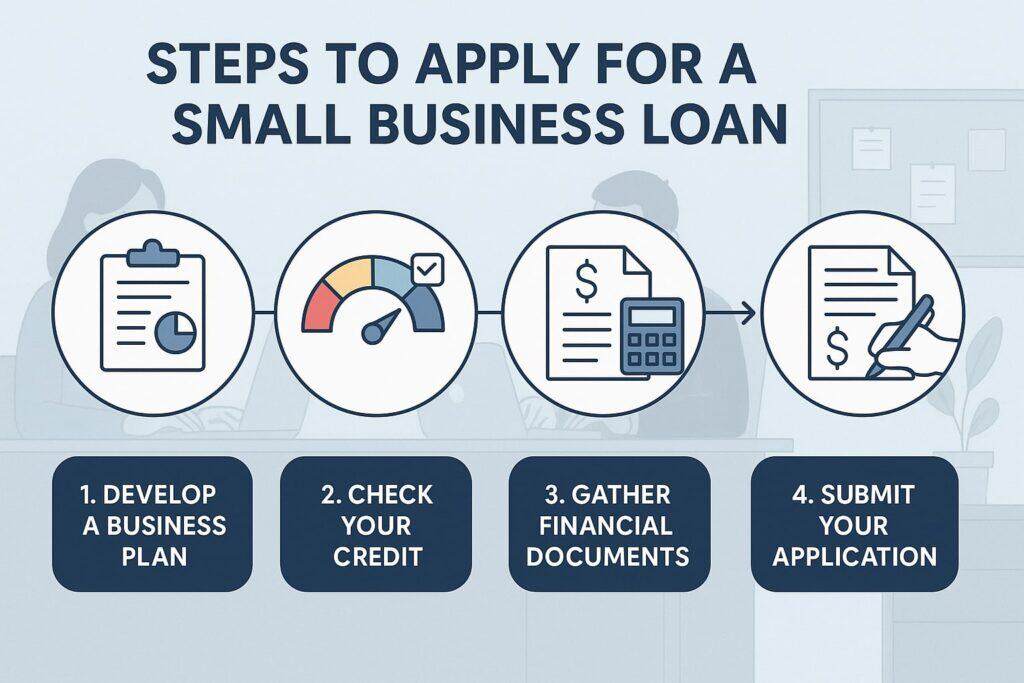
How to Apply for a Small Business Loan: A Complete Guide
Securing funding is one of the most important steps in building, expanding, or sustaining a business. For many entrepreneurs, small business loans provide the financial foundation to hire employees, purchase equipment, expand operations, or cover unexpected expenses.
Yet, the loan application process can feel overwhelming. Many business owners struggle with questions like: Which loan is best? How do I qualify? What documents will lenders need? And most importantly, how can I improve my chances of approval?
This complete guide aims to answer those questions in detail. By the end, you will have a step-by-step roadmap to applying for a small business loan, from understanding the different types of loans to preparing documentation, meeting lender requirements, and submitting your application successfully.
Whether you are a startup seeking seed funding, a growing company expanding operations, or an established business managing cash flow, this guide will walk you through everything you need to know.
Applying for a loan is not just about filling out paperwork—it’s about telling the story of your business in a way that demonstrates both potential and responsibility.
Lenders want to feel confident that you will repay the funds, so presenting a strong case backed by numbers, planning, and credibility is essential. Let’s dive deeper into the process and explore how you can secure the right financing for your business.
Understanding Small Business Loans

When we talk about “small business loans,” we are actually referring to a wide category of financing options. These loans can come from banks, credit unions, online lenders, or government-backed programs such as the Small Business Administration (SBA).
Each loan type has its own requirements, benefits, and drawbacks, so understanding these differences is the first step toward applying.
Traditional bank loans are the most well-known. They usually offer competitive interest rates but come with strict eligibility criteria and lengthy approval processes. Many small businesses—especially startups without established credit histories—find it difficult to qualify.
In contrast, online lenders have emerged as more flexible alternatives. They often approve loans faster, sometimes in as little as 24 hours, but may charge higher interest rates.
SBA loans are another highly popular option. These are partially guaranteed by the U.S. government, which reduces risk for lenders and increases approval chances for small businesses.
SBA loans usually have favorable terms, including longer repayment periods and lower interest rates. However, the application process can be more complex and time-consuming.
Other financing options include business lines of credit, which allow ongoing access to funds up to a certain limit, and equipment financing, which uses purchased equipment as collateral. There are also microloans, designed for very small businesses or entrepreneurs who need modest amounts of capital.
By understanding these types, business owners can match their needs with the right loan. For instance, if you need quick cash to cover payroll, an online loan might be best. But if you want to finance the purchase of expensive machinery with manageable monthly payments, an SBA loan or equipment financing may be a better fit.
Choosing the right type of loan is critical because it determines not only your chances of approval but also the long-term financial impact on your business.
Preparing Your Business for Loan Application

Preparation is the most critical stage in applying for a loan. Just like applying for a job, you must make sure your business is “interview-ready.” This means ensuring your finances are in order, your creditworthiness is solid, and your business story is compelling to lenders.
First, review your credit score—both personal and business, if applicable. For many small business owners, personal credit plays a significant role in approval decisions.
A score above 680 is usually considered good, but some lenders accept lower scores depending on other factors. If your score is low, take steps to improve it before applying, such as paying down debts and correcting errors on your credit report.
Next, organize your financial documents. Lenders typically require business tax returns, profit and loss statements, balance sheets, bank statements, and cash flow forecasts.
These documents help lenders evaluate whether your business generates enough revenue to repay the loan. Being prepared with accurate, up-to-date financials not only speeds up the process but also strengthens your credibility.
Your business plan is another key component. Lenders want to know how you plan to use the loan and how it will benefit your business. A strong business plan should outline your goals, target market, competition, and strategies for growth. It should also include financial projections showing how you will generate revenue and repay the loan.
Finally, consider your collateral and guarantees. Some loans, particularly secured loans, require collateral such as property, equipment, or accounts receivable. If you don’t have sufficient collateral, lenders may ask for a personal guarantee, meaning you are personally responsible for repayment if your business defaults.
The preparation stage may feel tedious, but it is where most loan applications succeed or fail. Taking the time to strengthen your financial profile and present a well-organized application significantly improves your chances of approval.
Steps to Apply for a Small Business Loan

Once you’ve prepared your business, the next stage is applying for the loan. While the process can vary depending on the lender and type of loan, the following steps provide a general roadmap:
- Determine your loan amount and purpose: Clearly identify how much money you need and what you will use it for. Lenders are more likely to approve applications with a specific, justified purpose—such as purchasing inventory, hiring staff, or expanding a facility.
- Research lenders and compare options: Not all lenders are the same. Some specialize in startups, while others prefer established businesses. Compare interest rates, fees, repayment terms, and approval times before choosing.
- Check eligibility requirements: Each lender has criteria regarding credit scores, time in business, and annual revenue. Make sure you meet these requirements before applying to avoid unnecessary rejections.
- Gather required documents: Prepare tax returns, financial statements, business licenses, and your business plan. Having these ready prevents delays in processing.
- Complete the application: Fill out the loan application carefully and accurately. Even small errors can delay approval or raise red flags.
- Wait for underwriting and approval: Lenders will review your application, verify information, and may request additional documents. This stage can take days or weeks, depending on the loan type.
- Accept the offer and sign agreements: If approved, review the loan terms carefully. Pay attention to interest rates, fees, repayment schedules, and penalties for late payments. Once you sign, the funds are usually disbursed within a few days.
By following these steps carefully, you can navigate the application process with confidence. Each stage requires patience, attention to detail, and preparation, but the result—access to the funding your business needs—makes the effort worthwhile.
Common Challenges and How to Overcome Them
Applying for a loan is rarely a smooth process. Many business owners encounter obstacles such as low credit scores, insufficient revenue history, or difficulty meeting collateral requirements. The key is not to get discouraged but to find solutions.
For example, if your credit score is too low, consider alternative lenders who are more flexible or look into microloans that have less stringent requirements. If your business is new and lacks financial history, applying for a smaller loan amount or seeking a cosigner can improve your chances.
Another common challenge is providing adequate documentation. Many applications are delayed or rejected simply because the borrower did not provide complete financial records. To avoid this, create a checklist of required documents and double-check before submitting.
Collateral is another hurdle. If you lack valuable assets, you can explore unsecured loans, though they often carry higher interest rates. Another option is a personal guarantee, though it increases personal risk.
The bottom line is that challenges are common, but nearly always solvable. Persistence, flexibility, and creative problem-solving can help you secure financing even when obstacles arise.
FAQs
Q1. How long does it take to get approved for a small business loan?
Answer: The timeline varies depending on the lender and loan type. Traditional bank loans and SBA loans often take several weeks, sometimes even months, due to their thorough underwriting process.
Online lenders, however, may approve applications within 24–72 hours. The key factors influencing speed include how quickly you provide documentation and how complex your financial situation is.
Many business owners make the mistake of waiting until they urgently need funds before applying, which can lead to cash flow crises. It’s always better to apply in advance, giving yourself a buffer for the approval process.
Planning ahead also allows you to compare multiple lenders and secure the best terms rather than rushing into the first available option.
Q2. Do I need a business plan to apply for a loan?
Answer: In most cases, yes—especially for startups or businesses seeking larger loan amounts. A business plan shows lenders that you have a clear vision, strategy, and understanding of your market. It reassures them that you will use the loan responsibly and have a roadmap to generate profits.
Some online lenders may not require a formal business plan, particularly for smaller loans. However, having one is always an advantage. Even if the lender doesn’t ask, preparing a plan helps you clarify your own goals and demonstrates professionalism.
It can also make conversations with lenders smoother, as you’ll be able to answer questions with confidence and data-backed insights.
Q3. What credit score do I need for a small business loan?
Answer: Most lenders prefer a personal credit score of at least 680, but requirements vary. Some SBA programs accept scores as low as 620, and certain online lenders work with borrowers who have scores below 600. The stronger your credit, the better your chances of approval and the more favorable your loan terms will be.
If your credit score is not where it should be, you can take steps to improve it. Paying down debt, disputing errors on your credit report, and making consistent on-time payments can raise your score over time.
Additionally, consider starting with smaller loans or lines of credit that are easier to qualify for, then building your business credit history to access larger loans later.
Conclusion
Applying for a small business loan is a journey that requires preparation, patience, and persistence. It’s not just about filling out forms—it’s about demonstrating to lenders that your business is a sound investment.
By understanding the different types of loans, preparing your financial documents, writing a strong business plan, and addressing potential challenges, you greatly increase your chances of success.
Remember that financing is not one-size-fits-all. The best loan for your business depends on your goals, creditworthiness, and resources. Whether you pursue a traditional bank loan, an SBA loan, or an online financing option, the most important thing is to approach the process strategically.
With the right preparation and mindset, you can secure the funding you need to grow your business and achieve long-term success.